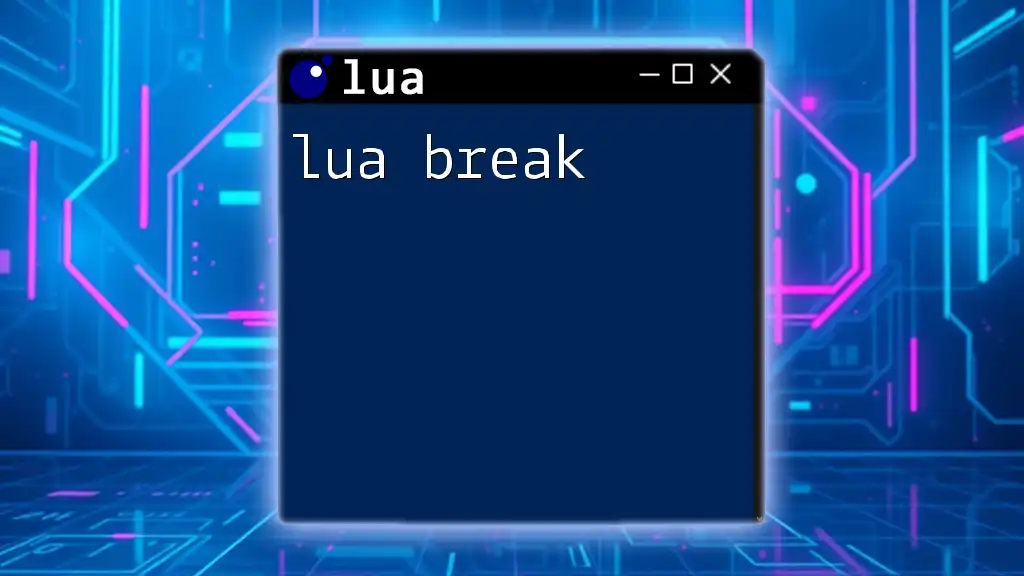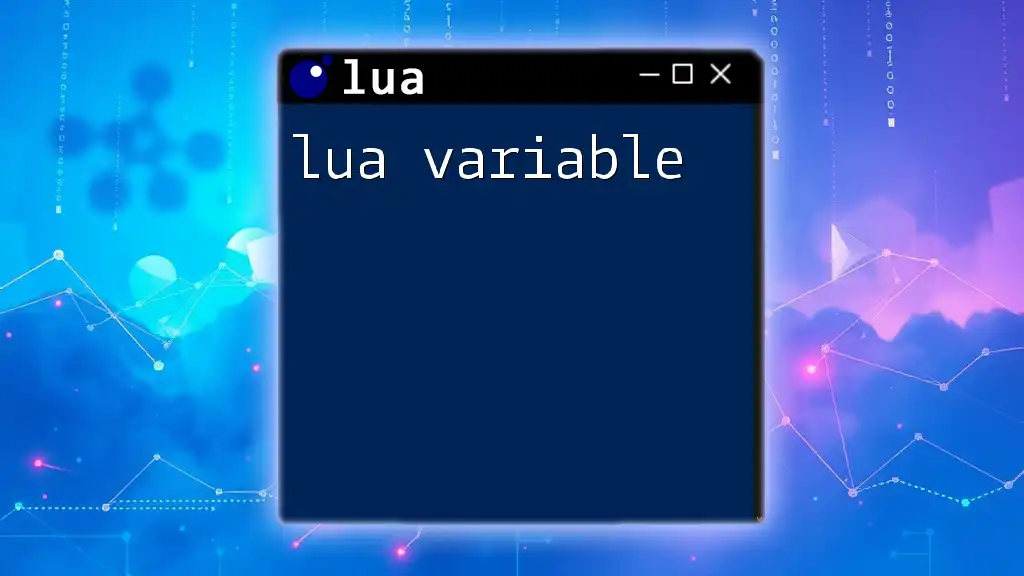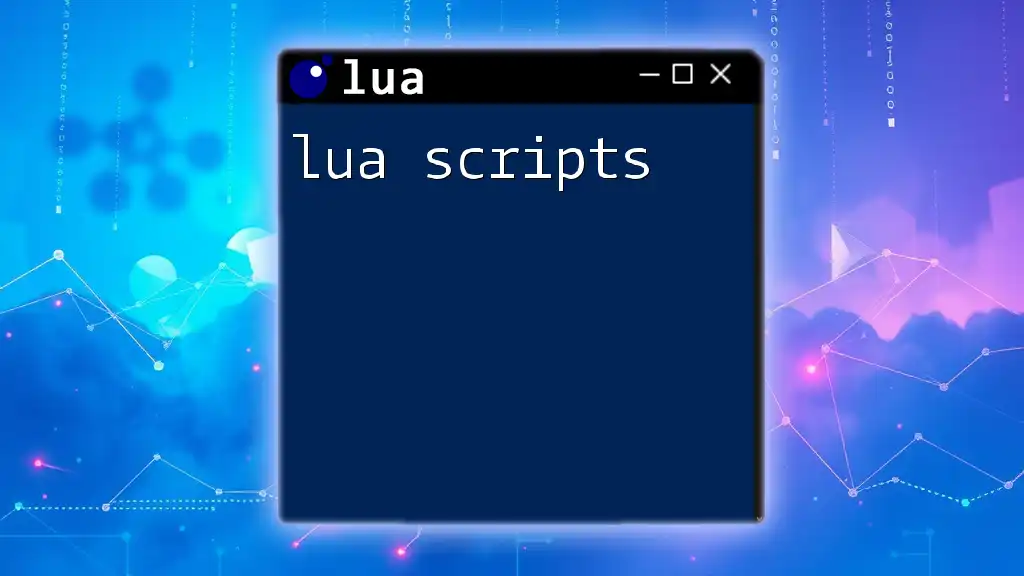In Lua, an array is a special type of table that allows you to store multiple values in a single variable, indexed numerically starting from 1.
Here’s a simple example of a Lua array:
local fruits = {"apple", "banana", "cherry"}
print(fruits[1]) -- Output: apple
What Are Arrays in Lua?
Arrays in Lua are data structures that allow you to store multiple values in a single variable. Unlike traditional arrays found in many programming languages, Lua arrays are implemented as tables, which can hold different data types and be indexed either numerically or by keys.
Characteristics of Lua Arrays
One of the key features of Lua arrays is their dynamic sizing. This means you don't need to specify the size of the array upon creation; you can add or remove elements as needed. Importantly, Lua uses one-based indexing, which differs from many other languages that start indexing from zero.
Arrays in Lua can be categorized into two primary types: numeric arrays and associative arrays. Numeric arrays use integers as their keys, while associative arrays (or tables) can use any data type as a key.

Types of Arrays in Lua
Numeric Arrays
Numeric arrays are the most straightforward form of arrays in Lua. They are typically used for lists of values where the order matters. Here’s a quick example:
local numbers = {1, 2, 3, 4, 5}
print(numbers[1]) -- Outputs: 1
In this code snippet, the array `numbers` contains five elements, and accessing the first element retrieves `1`.
Associative Arrays (Tables)
Lua’s associative arrays are incredibly versatile. They allow you to create key-value pairs, making data retrieval intuitive. Consider the following:
local person = {name = "John", age = 30}
print(person["name"]) -- Outputs: John
In this example, you can access `name` and `age` using string keys, which provides better clarity in your data structures.

Creating and Initializing Arrays in Lua
Basic Array Initialization
Creating a Lua array is straightforward. You can define an array directly with values like this:
local fruits = {"Apple", "Banana", "Cherry"}
This creates an array `fruits` containing three different strings.
Dynamic Initialization
You can also initialize arrays dynamically. This is particularly useful if you want to build the array based on user input or calculations:
local colors = {}
table.insert(colors, "Red")
table.insert(colors, "Green")
Here, we create an empty array `colors` and use `table.insert` to add elements to it.
Array Initialization with Loops
Loops can be a powerful way to populate arrays. For instance, if you want to create an array of squares of numbers, you could do:
local squares = {}
for i = 1, 5 do
squares[i] = i * i
end
This loop fills the `squares` array with the first five perfect squares, which can be particularly helpful in mathematical applications.

Accessing Array Elements
Indexing Basic Arrays
Accessing elements in a numeric array is as simple as referencing the index. Remember, Lua arrays are one-based:
local animals = {"Cat", "Dog", "Bird"}
print(animals[2]) -- Outputs: Dog
Here, you retrieve the second element, which is `Dog`.
Accessing Values in Associative Arrays
For associative arrays, you can use the key directly or within an index notation:
local car = {make = "Toyota", model = "Corolla"}
print(car.model) -- Outputs: Corolla
This not only makes the code more readable but also allows you to express relationships clearly.

Manipulating Arrays in Lua
Common Array Operations
Lua provides several built-in functions to manipulate arrays. One common way to add or remove elements is by using `table.insert` and `table.remove`:
local items = {"item1", "item2", "item3"}
table.insert(items, "item4") -- Adds item4
table.remove(items, 1) -- Removes item1
After these operations, the `items` array would contain "item2", "item3", and "item4".
Sorting an Array
You can easily sort an array using `table.sort`. For example:
local numbers = {5, 3, 8, 1}
table.sort(numbers)
After this code executes, `numbers` would be sorted in ascending order, resulting in `{1, 3, 5, 8}`.

Lua Array of Arrays
Understanding Nested Arrays
Arrays can also contain other arrays, making the creation of multi-dimensional arrays possible. This is key for representing matrices or grids:
local matrix = {
{1, 2, 3},
{4, 5, 6},
{7, 8, 9}
}
print(matrix[1][2]) -- Outputs: 2
The `matrix` consists of nested arrays, with each sub-array representing a row.
Iterating Through an Array of Arrays
To access elements in a nested array, you can use a nested loop:
for i = 1, #matrix do
for j = 1, #matrix[i] do
print(matrix[i][j])
end
end
This example iterates through each element of the `matrix`, allowing you to process data effectively.

Common Mistakes When Working with Lua Arrays
One common mistake with Lua arrays is off-by-one errors. Always remember that Lua uses one-based indexing. Another common error is misunderstanding associative arrays; ensure that you know when to use string keys versus numeric keys.

Best Practices for Using Arrays in Lua
Choosing the right type of array is crucial. Use numeric arrays for ordered collections of items, while associative arrays are perfect for mapping relationships between keys and values. Remember to manage memory effectively, especially when dealing with large arrays, to avoid unnecessary performance issues.

Conclusion
In this comprehensive guide on Lua arrays, we explored their types, creation, manipulation, and best practices. Arrays are a fundamental component of programming in Lua, allowing for efficient data organization and retrieval. Practice with the provided examples to build a solid foundation in using arrays in your Lua projects. Engage with additional resources to deepen your understanding of Lua's capabilities!

















